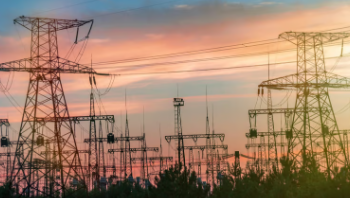India Unveils National Electricity Plan For 500 GW Renewable Goal
The Central Electricity Authority (CEA) has started an ambitious National Electricity Plan (Transmission). This plan aims to increase India’s renewable energy capacity significantly. It sets a target of 500 GW (gigawatts) of renewable energy by 2030 and more than 600 GW by 2032. The plan was announced by Union Minister Shri Manohar Lal during a meeting held in New Delhi on October 14-15, 2024.
Goals of the Plan
The key goals of this plan include:
Increasing Renewable Energy: Installing more than 600 GW of renewable energy by 2032.
Energy Storage Systems: Creating storage systems that can keep excess energy, such as:
- 47 GW of Battery Energy Storage Systems.
- 31 GW of Pumped Storage Plants.
- Power Transmission and Renewable Energy Integration
The plan will build a strong system for transmitting energy effectively. This will help deliver power to places that produce Green Hydrogen and Green Ammonia, especially in coastal regions like Mundra, Kandla, and Tuticorin.
Infrastructure Development
Key targets for building infrastructure include:
- Building 1,91,000 circuit kilometers (ckm) of transmission lines by 2031-32. This is a long-distance network that carries electricity.
- Creating a transformation capacity of 1270 GVA (gigavolt-amperes), which means how much power can be converted and used.
- Planning for 33 GW of HVDC (High-Voltage Direct Current) bi-pole links. These links help carry large amounts of electricity over long distances.
Inter-regional Transmission Expansion
India’s ability to transfer electricity between different regions will grow:
- From 119 GW today to 143 GW by 2027.
- To 168 GW by 2032.
Cross-border Interconnections
The plan also aims to improve connections with neighboring countries, including:
- Nepal, Bhutan, Myanmar, Bangladesh, and Sri Lanka.
- There are plans for connections with Saudi Arabia and the UAE.
Technological Innovations
The plan uses modern technologies to make the system better and more efficient, including:
Hybrid Substations: These combine different types of equipment in one place for easier management.
Monopole Structures: These are tall, slim towers that save space for the transmission lines.
Insulated Cross Arms: These help reduce the size of towers and the land they occupy.
Dynamic Line Rating: This allows more electricity to flow through existing lines without the need for new ones.
High-Performance Conductors: These improve how electricity flows, making the system more efficient.
Higher Voltage Levels: Increasing the maximum operating voltage to 1200 kV AC (kilovolts alternating current) means that more electricity can be carried.
Investment Opportunities
This transmission plan offers a significant investment opportunity. It expects to attract over INR 9,15,000 Crores (around $110 billion) in investments in the transmission sector by 2032. This opens the door for investors to take part in new transmission projects that will be developed over the next ten years.
Month: Current Affairs - October, 2024
Category: India Nation & States Current Affairs




